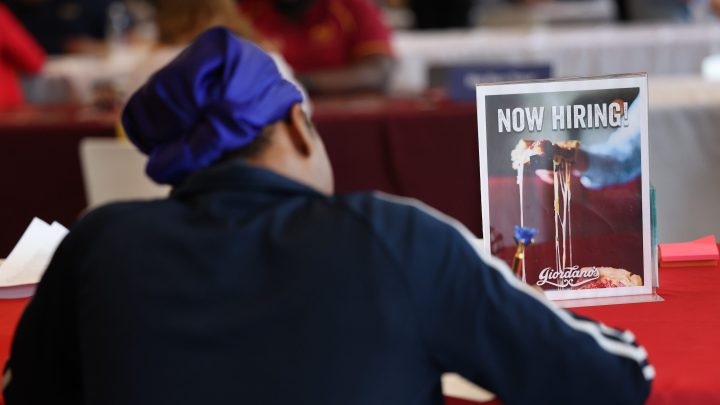
Black unemployment seems to be rising. But other indicators of Black employment are strong.
Black unemployment seems to be rising. But other indicators of Black employment are strong.

There was plenty of good news in that March jobs report we got on Friday — strong job creation, steady wage growth, and a tick down in unemployment, which has now been below 4% for well over two years.
But one bit of bad news caught our attention: Unemployment among Black workers rose sharply, up to 6.4%, in March, a 0.8% increase from March 2023.
It hasn’t been that high since the middle of 2022.
By contrast, unemployment for white workers held steady, at 3.4% — just about half the rate of Black workers. And unemployment among Hispanic workers actually dipped last month, to 4.5%.
It’s possible the surge in Black unemployment is just a statistical anomaly, said Jasmine Tucker at the National Women’s Law Center.
“We’re talking about a sample that’s not huge, that’s why we see a lot of these big month-to-month jumps when we’re looking at groups by race and gender,” she said.
That said, Black unemployment has been rising since January.
“If there’s a three or four month trend upward, then there still might be something worth worrying about,” said economist Gary Hoover at Tulane University. He said Black workers — with on-average less training and experience — tend to be more vulnerable to job-loss.
“If we think of Black unemployment as being the canary in the coal mine — the first wave of unemployment before it hits the overall economy — then this could be a harbinger of things to come,” Hoover said.
But we haven’t seen other signs of a job-market downturn. So Hoover thinks there might be a more favorable explanation.
“You can’t be unemployed if you’re not looking for a job. Part of this could be that labor market conditions are conducive now to more individuals being willing to look for employment,” he said.
The recent uptick in the Black unemployment rate is worth watching, said Elise Gould, a senior economist at the Economic Policy Institute. But, she points out, “This is still quite low by any historical measure.”
And she said, other measures of Black labor-market performance are really strong, following years of pandemic-era hiring, and wage gains for low-wage workers.
Gould reports that at the end of last year, a higher percentage of Black workers age 25-to-54 had jobs than ever before.
And wages have improved more than any time in the last 40 years — growing nearly 1.5% per year since the pandemic, after accounting for inflation.
There’s a lot happening in the world. Through it all, Marketplace is here for you.
You rely on Marketplace to break down the world’s events and tell you how it affects you in a fact-based, approachable way. We rely on your financial support to keep making that possible.
Your donation today powers the independent journalism that you rely on. For just $5/month, you can help sustain Marketplace so we can keep reporting on the things that matter to you.











